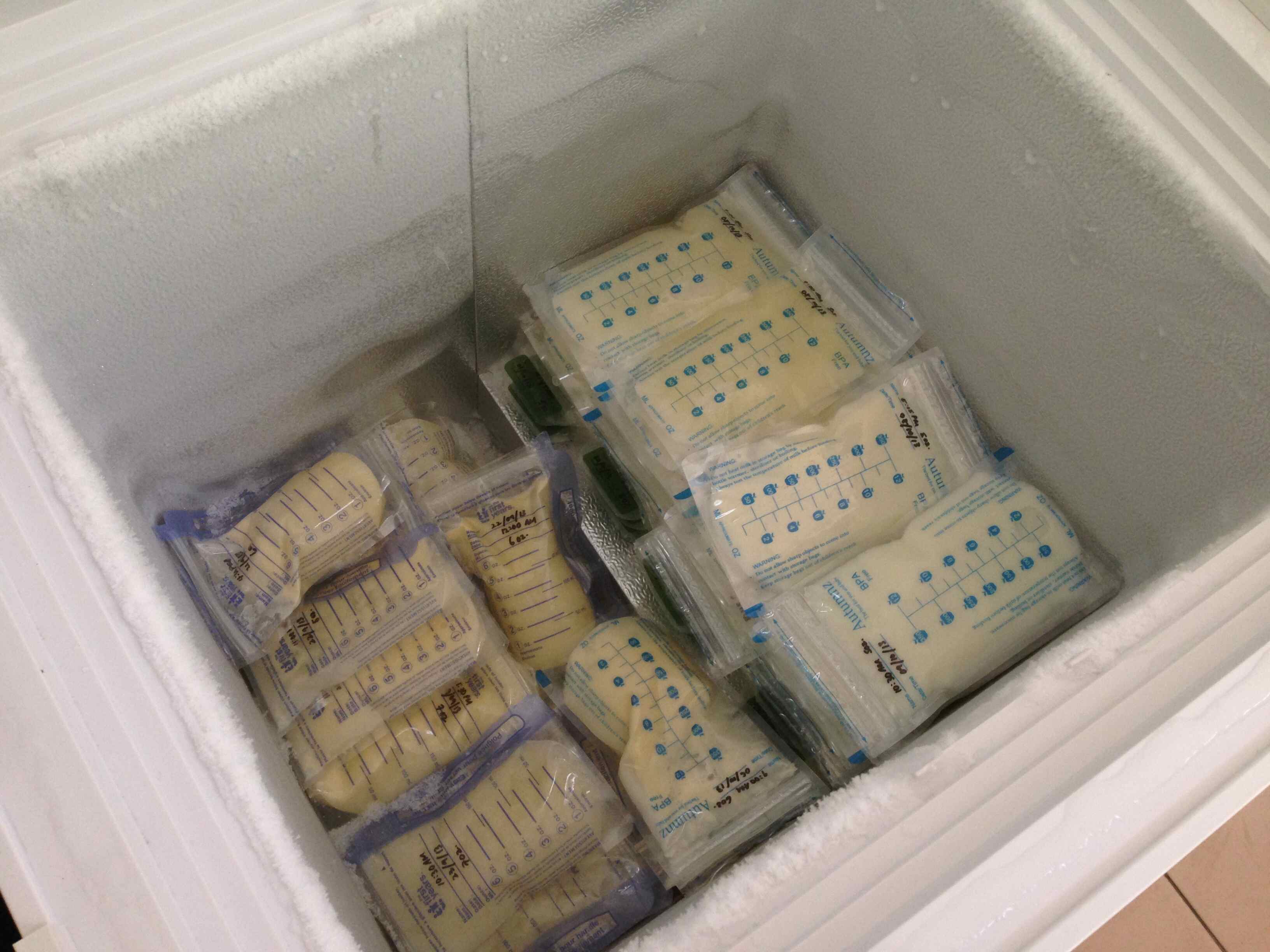

Articles
How To Store Breast Milk In Deep Freezer
Modified: May 6, 2024
Learn the best techniques for storing breast milk in a deep freezer. Read our helpful articles for step-by-step instructions and tips to ensure your baby's milk stays fresh.
(Many of the links in this article redirect to a specific reviewed product. Your purchase of these products through affiliate links helps to generate commission for Storables.com, at no extra cost. Learn more)
Introduction
For breastfeeding mothers, the ability to express and store breast milk can be a game-changer. Whether you’re heading back to work, planning a night out, or simply want to have a backup supply, storing breast milk can provide convenience and peace of mind. While refrigeration is a common method of milk storage, utilizing a deep freezer can offer additional benefits.
Storing breast milk in a deep freezer allows you to keep your milk for an extended period, preserving its nutritional value and ensuring a ready supply when needed. In this article, we will explore the benefits of storing breast milk in a deep freezer, discuss the preparations and techniques involved, and provide guidelines for using stored breast milk.
Key Takeaways:
- Storing breast milk in a deep freezer offers extended storage, convenience, and cost-effectiveness, providing breastfeeding mothers with a reliable backup supply and peace of mind.
- Proper preparation, labeling, and storage techniques ensure the safety, quality, and optimal nutritional value of stored breast milk, supporting the nourishment of babies with a reliable and healthy food source.
Read more: How To Store Breast Milk In Freezer
Benefits of Storing Breast Milk in a Deep Freezer
There are several advantages to storing breast milk in a deep freezer:
- Extended storage period: Deep freezers are designed to maintain a consistently low temperature, typically below 0°F (-18°C). This freezing temperature helps to preserve the quality and freshness of breast milk for up to 12 months, compared to the 3-6 months shelf life in a standard kitchen freezer. This extended storage period can be especially beneficial if you have a surplus milk supply or if you plan to build a frozen stash.
- Convenient backup supply: Storing breast milk in a deep freezer ensures that you have a readily available backup supply. Life can be unpredictable, and there may be occasions when you are unable to breastfeed or express milk. Having a deep freezer stocked with milk provides peace of mind, knowing that your baby will still receive the nourishment they need in your absence.
- Preserves nutritional value: Freezing breast milk at a low temperature helps to retain its nutritional content. The deep freezer’s consistent freezing environment minimizes the deterioration of essential nutrients, such as vitamins, proteins, and antibodies. This ensures that your baby continues to receive the same high-quality nutrition even after freezing and thawing.
- Cost-effective: Investing in a deep freezer may seem like an added expense, but in the long run, it can be a cost-effective solution. Storing breast milk in a deep freezer allows you to take advantage of sales, discounts, or bulk buying of breast milk storage bags or containers. It also reduces the reliance on formula milk, which can be expensive over time.
- Flexibility and convenience: When you have a deep freezer stocked with breast milk, you have the flexibility to plan outings, socialize, or return to work without worrying about milk supply. You can confidently store milk in advance, knowing that it will be available whenever necessary. This convenience can help alleviate stress and contribute to your overall well-being as a breastfeeding mother.
Now that we’ve explored the benefits of storing breast milk in a deep freezer, let’s dive into the practical aspects of preparing for storage and the techniques involved in preserving the freshness of your breast milk.
Key Takeaways:
- Storing breast milk in a deep freezer offers extended storage, convenience, and cost-effectiveness, providing breastfeeding mothers with a reliable backup supply and peace of mind.
- Proper preparation, labeling, and storage techniques ensure the safety, quality, and optimal nutritional value of stored breast milk, supporting the nourishment of babies with a reliable and healthy food source.
Read more: How To Store Breast Milk In Freezer
Benefits of Storing Breast Milk in a Deep Freezer
There are several advantages to storing breast milk in a deep freezer:
- Extended storage period: Deep freezers are designed to maintain a consistently low temperature, typically below 0°F (-18°C). This freezing temperature helps to preserve the quality and freshness of breast milk for up to 12 months, compared to the 3-6 months shelf life in a standard kitchen freezer. This extended storage period can be especially beneficial if you have a surplus milk supply or if you plan to build a frozen stash.
- Convenient backup supply: Storing breast milk in a deep freezer ensures that you have a readily available backup supply. Life can be unpredictable, and there may be occasions when you are unable to breastfeed or express milk. Having a deep freezer stocked with milk provides peace of mind, knowing that your baby will still receive the nourishment they need in your absence.
- Preserves nutritional value: Freezing breast milk at a low temperature helps to retain its nutritional content. The deep freezer’s consistent freezing environment minimizes the deterioration of essential nutrients, such as vitamins, proteins, and antibodies. This ensures that your baby continues to receive the same high-quality nutrition even after freezing and thawing.
- Cost-effective: Investing in a deep freezer may seem like an added expense, but in the long run, it can be a cost-effective solution. Storing breast milk in a deep freezer allows you to take advantage of sales, discounts, or bulk buying of breast milk storage bags or containers. It also reduces the reliance on formula milk, which can be expensive over time.
- Flexibility and convenience: When you have a deep freezer stocked with breast milk, you have the flexibility to plan outings, socialize, or return to work without worrying about milk supply. You can confidently store milk in advance, knowing that it will be available whenever necessary. This convenience can help alleviate stress and contribute to your overall well-being as a breastfeeding mother.
Preparing for Storage
Before you start storing breast milk in your deep freezer, it’s important to take some necessary preparations. Follow these steps to ensure that your breast milk remains safe and of high quality:
- Wash your hands: Before expressing breast milk or handling storage containers, make sure to wash your hands thoroughly with soap and warm water. This helps to prevent the transfer of any bacteria or contaminants to the milk.
- Clean and sterilize storage containers: Clean your storage containers, such as breast milk storage bags or bottles, using warm soapy water. Rinse them thoroughly to remove any soap residue. To ensure proper sterilization, boil the containers for 5-10 minutes or use a sterilizing solution specifically designed for baby equipment. Allow the containers to air dry or use a clean paper towel to dry them.
- Check the quality of your deep freezer: Ensure that your deep freezer is clean, odor-free, and maintains a temperature below 0°F (-18°C). If you’re using a second-hand deep freezer, clean it thoroughly and allow it to reach the desired temperature before storing breast milk.
- Freeze the storage containers: Place the clean and dry storage containers in the deep freezer before expressing breast milk. This helps to cool down the containers and ensures that the milk maintains its freshness when transferred into them.
- Establish a labeling system: Create a labeling system to keep track of the date and time when the breast milk is expressed. Use waterproof labels or a permanent marker to label each container with the date of expression. This helps to ensure that you use the oldest milk first and maintain a proper rotation of stored milk.
- Have a stock of breast milk storage bags: If you plan to use breast milk storage bags, make sure you have an adequate supply on hand. Opt for high-quality bags that are BPA-free and have a secure closure to prevent leakage and contamination.
By following these preparations, you can ensure that the breast milk you store in the deep freezer remains safe, hygienic, and of the highest quality for your baby’s consumption.
Choosing the Right Containers
When it comes to storing breast milk in a deep freezer, choosing the right containers is crucial. The containers you use should be safe, freezer-friendly, and designed specifically for storing breast milk. Here are some factors to consider when selecting the containers:
- Material: Look for containers made of BPA-free materials, such as polypropylene or glass. These materials are safe, durable, and won’t leach harmful chemicals into the breast milk. Avoid using plastic containers or bags that are not specifically designed for storing breast milk, as they may not be freezer-friendly or can break down when exposed to low temperatures.
- Sealability: Ensure that the containers have secure and tight seals that prevent leakage. This is especially important if you plan to store the containers horizontally in the freezer. Spills can lead to a waste of precious breast milk and make the storage environment messy.
- Size: Choose containers that suit your storage needs. It’s often best to store breast milk in small portions, typically 2-4 ounces (60-120 ml) per container. This allows you to thaw only the amount needed, minimizing wastage.
- Ease of use: Consider how easy it is to pour, fill, and seal the containers. Look for options with wide openings that make it convenient to express breast milk directly into the containers or to pour milk from one container to another without spills.
- Stackability: If space is limited in your deep freezer, containers that are stackable can help maximize the available space. These containers can be placed neatly on top of each other, allowing for efficient use of the freezer’s storage capacity.
- Compatibility with deep freezer: Ensure that the containers you choose are suitable for deep freezer storage. Check the manufacturer’s instructions to verify that they can withstand the low temperatures in a deep freezer without cracking or compromising the integrity of the containers.
When selecting containers for storing breast milk, prioritize safety, functionality, and convenience. Remember to clean and sterilize the containers before each use to maintain a hygienic storage environment. Using the right containers will help ensure the optimal storage of your breast milk and make the process more efficient and hassle-free.
Read more: How Long Is Breast Milk Good In Deep Freezer
Sterilizing Containers
Sterilizing the containers used for storing breast milk is an important step to maintain a hygienic and safe storage environment. Proper sterilization helps to eliminate bacteria and other contaminants that could potentially affect the quality and safety of the breast milk. Here’s how you can sterilize your containers:
- Wash containers with warm soapy water: Before sterilizing, wash the containers thoroughly with warm soapy water. Use a bottle brush or a clean cloth to scrub the inside and outside of the containers, ensuring that all surfaces are cleaned properly.
- Rinse with hot water: Rinse the containers with hot water to remove any soap residue. Make sure to rinse them thoroughly to ensure there are no leftover traces of soap, which can affect the taste and quality of the breast milk.
- Boiling method: Boiling is one of the most common and effective methods of sterilizing containers. Fill a large pot with water and place the containers inside. Ensure the containers are fully submerged in the water. Bring the water to a rolling boil and let it continue boiling for at least 5-10 minutes. Remove the containers from the pot using clean tongs and let them air dry on a clean paper towel or a drying rack.
- Sterilizing solution: Another option is to use a sterilizing solution specifically designed for baby equipment. Follow the manufacturer’s instructions on the dilution ratio and immersion time. Immerse the containers in the sterilizing solution, ensuring they are fully submerged. After the recommended time, remove the containers and allow them to air dry or use a clean paper towel to dry them.
- Sterilizing in the dishwasher: Some containers are dishwasher-safe and can be sterilized using the dishwasher’s sterilizing cycle or the highest heat setting. Place the containers securely on the top rack of the dishwasher, ensuring they are not touching any other items. Run the dishwasher cycle as per the manufacturer’s instructions.
Remember to sterilize all parts of the containers, including lids, caps, and sealing discs. It’s also essential to sterilize any breast pump parts or other equipment used in expressing breast milk. Maintaining a sterile environment ensures that the stored breast milk remains safe for your baby’s consumption.
After sterilization, handle the containers with clean hands or using clean tongs to avoid contamination. Store the sterilized containers in a clean and dry area until they are ready to be used for storing breast milk.
Expressing and Collecting Breast Milk
Expressing and collecting breast milk is a process that requires careful handling to maintain the quality and safety of the milk. Here are some steps to follow when expressing and collecting breast milk:
- Find a comfortable and relaxing environment: Create a calm and comfortable space where you can relax during the expressing process. Being in a relaxed state can help stimulate the letdown reflex and make it easier to express milk.
- Wash your hands: Before expressing breast milk, it’s crucial to wash your hands thoroughly with soap and warm water. This helps prevent the transfer of any bacteria or contaminants to the breast milk.
- Choose a suitable expressing method: There are several methods available for expressing breast milk, including hand expression, manual breast pumps, and electric breast pumps. Choose the method that works best for you and allows you to express milk comfortably and efficiently.
- Follow proper hygiene practices: Ensure that all the equipment, including breast pump parts, bottles, and containers, are clean and sterile before use. Follow the manufacturer’s instructions for assembly and use of the breast pump to maintain hygiene standards.
- Massage and stimulate the breasts: Before expressing milk, gently massage the breasts to stimulate milk flow. Applying warmth to the breasts through a warm compress or taking a warm shower can also aid in the letdown reflex.
- Express milk into the chosen container: Position the breast pump funnel or your hand on the breast and begin expressing milk. If using a breast pump, ensure a proper fit to maximize milk extraction. If hand expressing, apply gentle pressure to the breast and squeeze the nipple to release milk. Direct the milk flow into the chosen container, taking care not to spill or contaminate the milk.
- Collect and store milk in appropriate containers: Once you have expressed the desired amount of milk, carefully transfer it into the chosen storage containers. Use a clean and sterile funnel or a special transfer lid to minimize spillage and contamination. Fill the containers only up to the recommended guidelines to allow space for milk expansion during freezing.
- Seal and label the containers: Ensure that the containers are securely sealed to prevent leakage. Label each container with the date of expression using a waterproof label or a permanent marker. This helps to keep track of the milk’s freshness and ensures proper rotation.
- Store the collected milk immediately: Place the filled and labeled containers in the deep freezer as soon as possible. The sooner you freeze the milk, the better it retains its nutritional value and freshness.
Following these steps will help ensure that the breast milk you express and collect is handled in a safe and hygienic manner. Proper expressing techniques and storage practices contribute to the overall quality and longevity of the stored breast milk.
When storing breast milk in a deep freezer, use airtight, BPA-free containers or breast milk storage bags to prevent freezer burn and maintain the quality of the milk. Label each container with the date to ensure proper rotation.
Labeling and Dating Containers
Labeling and dating the containers that hold your stored breast milk is an essential step in maintaining organization and ensuring the freshness of the milk. Proper labeling allows you to easily identify the oldest milk for use and ensures that you follow a proper rotation system. Here’s a guide on how to effectively label and date your breast milk storage containers:
- Choose a labeling method: Select a labeling method that works best for you. You can use waterproof labels, adhesive tape, or a permanent marker to write directly on the containers.
- Include the date of expression: Write the date when the breast milk was expressed on each container. This helps in identifying the oldest milk and allows you to use the milk in the proper order, following the first-in, first-out principle.
- Add the time of expression (optional): If desired, you can also include the time of expression on the label. This can be helpful if you’re pumping and storing milk multiple times a day or if you want to track the freshness of the milk over shorter time intervals.
- Use a clear and legible format: Make sure that the labeling is easy to read and understand. Use a clear and legible handwriting or opt for pre-printed labels that allow you to fill in the necessary details.
- Place the label in a visible area: Stick the label or write the necessary information on a clear and visible part of the container. Avoid placing the label where it could be damaged, smudged, or covered by condensation.
- Freeze the containers in an organized manner: Arrange the labeled containers neatly in the deep freezer, ensuring they are easily accessible. Consider using storage baskets or bins for added organization and to prevent containers from getting buried under others.
- Regularly review and rotate the milk supply: As you add new containers of breast milk to the deep freezer, maintain a regular review process. Check the labels periodically and prioritize using the oldest milk first. This helps to prevent any milk from expiring or being stored for too long.
By labeling and dating your breast milk storage containers, you create an efficient and organized system that ensures the freshness and usability of your milk supply. It also helps you keep track of how long the milk has been stored and allows you to maintain high-quality breast milk for your little one’s nourishment.
Storing Breast Milk in the Deep Freezer
Storing breast milk in a deep freezer is a reliable and efficient way to preserve its freshness and nutritional value for an extended period. With proper storage techniques, you can ensure that your stored breast milk remains safe and ready to use whenever needed. Here’s how to store breast milk in the deep freezer:
- Prepare the storage containers: Ensure that the storage containers you are using are clean, dry, and specifically designed for storing breast milk. Sterilize the containers before use to create a hygienic storage environment.
- Pour milk into the containers: Carefully transfer the expressed breast milk into the storage containers, filling them only up to the recommended guidelines. Leave some space at the top to allow for expansion when the milk freezes.
- Seal the containers securely: Ensure that the lids or caps of the storage containers are tightly sealed to prevent any leakage or contamination during freezing.
- Label and date the containers: Use a waterproof label or a permanent marker to clearly label each container with the date of expression. This helps you keep track of the freshness of the milk and ensures proper rotation.
- Arrange the containers in the deep freezer: Place the sealed and labeled containers in an organized manner in your deep freezer. Arrange them neatly, ensuring that they are easily accessible and visible.
- Maintain a consistent freezing temperature: Ensure that your deep freezer maintains a constant temperature below 0°F (-18°C). This ensures the optimal preservation of the milk’s quality and nutritional value.
- Avoid frequent temperature fluctuations: Minimize the number of times you open the deep freezer to maintain a stable temperature. Frequent temperature fluctuations can affect the quality and safety of the stored breast milk.
- Do not store milk in the door of the deep freezer: The door of the deep freezer is subject to more temperature fluctuations compared to the inner compartments. Store the breast milk containers in the main body of the freezer for optimum preservation.
- Keep track of freezer storage duration: Regularly monitor and record the storage duration of the breast milk in the deep freezer. Follow the general guideline of using frozen breast milk within 6-12 months for optimal quality.
- Review and rotate the milk supply: Regularly check the labels on the containers and prioritize using the oldest milk first. This helps maintain a proper rotation system and prevents any milk from expiring or being stored for too long.
By following these steps, you can ensure that your stored breast milk in the deep freezer remains of high quality and ready for use whenever needed. Proper storage practices contribute to the preservation of the milk’s nutrients and maintain a safe and healthy food source for your baby.
Read more: How To Store Breast Milk Bags In Freezer
Thawing Frozen Breast Milk
Thawing frozen breast milk is an important step in preparing it for feeding. Proper thawing ensures that the milk’s nutritional content is preserved and that it is safe for your baby to consume. Here’s a guide on how to thaw frozen breast milk:
- Plan ahead: When you need to use frozen breast milk, it’s important to plan ahead and allow enough time for thawing. Avoid thawing breast milk at room temperature as it may promote the growth of bacteria and compromise the milk’s quality.
- Choose the thawing method: There are a few methods you can use to thaw frozen breast milk:
- Refrigerator: This is the recommended method as it allows for gradual thawing. Place the frozen breast milk container in the refrigerator and leave it to thaw overnight or for approximately 12 hours.
- Running water: If you need to thaw breast milk quickly, you can hold the container under cool running water. Make sure to use water at a safe temperature, not too hot or too cold. Rotate the container to evenly distribute the thawing process.
- Breast milk warmer: You can use a bottle warmer specifically designed for breast milk to thaw it. Follow the manufacturer’s instructions to ensure safe thawing and avoid overheating the milk.
- Avoid using a microwave or boiling water: Never use a microwave or boil frozen breast milk to thaw it. These methods can lead to the loss of beneficial nutrients and create hot spots that may harm your baby.
- Monitor the thawing process: Keep an eye on the thawing breast milk to ensure that it thaws evenly and without any signs of spoilage. Gently swirl or stir the milk after thawing to redistribute the fat that may have separated.
- Use thawed breast milk within 24 hours: Once the breast milk is thawed, it should be used within 24 hours. Avoid refreezing thawed milk as it may lead to a loss of nutritional quality.
- Discard any unused thawed milk: If your baby does not finish the thawed breast milk during a feeding, it is important to discard any remaining milk after the feeding. This helps to reduce the risk of bacterial growth.
- Do not heat breast milk directly on the stove or in boiling water: Heating thawed breast milk can be done by placing the container in a bottle warmer or a bowl of warm water. Avoid using direct heat sources such as stovetops or boiling water as they can overheat the milk and destroy its beneficial properties.
By following these guidelines, you can safely and effectively thaw frozen breast milk, ensuring that it maintains its nutritional value and remains safe for your baby’s consumption. Remember to always store and handle breast milk with care to provide your little one with the best nourishment possible.
Guidelines for Using Stored Breast Milk
Using stored breast milk is a convenient and nourishing option for feeding your baby. To ensure the safety and quality of the milk, it’s important to follow these guidelines when using stored breast milk:
- Check the milk’s appearance and smell: Before using stored breast milk, visually inspect it for any signs of spoilage. Ensure that there are no clumps, chunks, or discoloration. Give it a gentle swirl to check for a consistent texture. Additionally, give it a sniff to make sure there are no off-putting odors.
- Thaw the milk properly: If the breast milk is frozen, follow the proper thawing methods outlined in the previous section. Avoid using the microwave or boiling water, as they can destroy the milk’s beneficial nutrients and create uneven hot spots.
- Warm the milk gently: If you need to warm the breast milk, do it using gentle methods. Use a bottle warmer or place the container in a bowl of warm water. Never heat breast milk directly on a stovetop or in boiling water, as this can result in overheating.
- Do not shake vigorously: When preparing thawed breast milk for feeding, avoid shaking it vigorously. Instead, gently swirl or rotate the container to mix any separated fat back into the milk and maintain its composition.
- Use within the recommended timeframe: Use the thawed and refrigerated breast milk within 24 hours of thawing. If the milk is freshly expressed and stored in the refrigerator, it can be used within 4-8 days.
- Do not refreeze thawed breast milk: Once breast milk has been thawed, it should not be refrozen. Refreezing can lead to a loss of nutrients and affect the milk’s overall quality.
- Feed baby in a timely manner: Once breast milk is prepared for feeding, offer it to your baby within 1-2 hours. This helps to ensure that the milk remains at a safe temperature and minimizes the risk of bacterial growth.
- Store leftovers properly: If your baby does not finish a feeding, discard any remaining breast milk. It is not safe to store leftover breast milk that has come into contact with your baby’s mouth as it can harbor bacteria. Prevention of waste by offering smaller amounts and gradually increasing the feeding volume can help minimize leftovers.
- Transport and store breast milk safely: If you need to transport or store breast milk outside of your home, use insulated cooler bags with ice packs to maintain a proper temperature. Keep the milk in the coldest part of the cooler bag and use it within a few hours.
- Observe your baby’s cues: Finally, pay attention to your baby’s cues and reactions while feeding with stored breast milk. Each baby is unique, and monitoring how your baby responds to the milk can help ensure their comfort and well-being.
By adhering to these guidelines, you can confidently use stored breast milk for your baby, providing them with the nourishment they need while maintaining their health and safety. Always prioritize hygiene and proper storage practices to ensure optimal quality throughout the feeding process.
Frequently Asked Questions
Here are some common questions about storing breast milk in a deep freezer:
- Q: How long can breast milk be stored in a deep freezer?
- Q: Can I add freshly expressed breast milk to already frozen milk?
- Q: Can I store breast milk in the freezer compartment of a standard refrigerator?
- Q: Can I store breast milk in glass containers?
- Q: Is it safe to thaw and re-freeze breast milk?
- Q: Can I mix breast milk from different pumping sessions?
- Q: How can I thaw frozen breast milk when I’m away from home?
- Q: Can I warm thawed breast milk in the microwave?
- Q: How can I tell if stored breast milk has gone bad?
- Q: Can I store breast milk in breast pump storage bags?
A: Breast milk can be stored in a deep freezer for up to 12 months. Freezing it at a temperature below 0°F (-18°C) helps preserve its quality and nutritional value.
A: Yes, fresh breast milk can be added to already frozen milk. Simply ensure that the fresh milk has been cooled in the refrigerator before combining it with the frozen milk. Use proper storage containers and label the updated date of expression.
A: While you can store breast milk in the freezer compartment of a standard refrigerator, it’s important to note that the shelf life is shorter compared to a deep freezer. In a freezer compartment, breast milk can be stored for around 3-6 months.
A: Yes, glass containers can be used to store breast milk in the deep freezer. Make sure the glass containers are specifically designed for freezing and have airtight lids to prevent leakage and protect the milk’s quality.
A: It is recommended to avoid thawing and re-freezing breast milk. Thawed breast milk should be used within 24 hours and should not be refrozen. Refreezing can affect the milk’s quality and increase the risk of bacterial growth.
A: Yes, you can mix breast milk from different pumping sessions once they are at the same temperature. Refrigerated milk can be added to milk that has already been refrigerated, and cooled milk can be added to frozen milk, ensuring that they are all within the same date of expression.
A: When you’re away from home, you can thaw frozen breast milk by placing it in an insulated cooler bag with ice packs. This helps maintain a cool temperature and allows the milk to gradually thaw throughout the day.
A: No, it is not recommended to warm thawed breast milk in the microwave. Microwaving can create hot spots in the milk and destroy valuable nutrients. It’s best to use a bottle warmer or warm water to gently warm the milk.
A: If stored breast milk has a sour or rancid smell, unusual appearance, or clumps when gently swirled, it may have gone bad and should be discarded. Trust your senses when assessing the milk’s freshness.
A: Yes, breast pump storage bags are convenient for storing breast milk. Ensure that the bags are specifically designed for freezing, have a strong seal, and are BPA-free.
Remember, if you have any concerns or unique situations regarding storing breast milk, consult with a lactation consultant or healthcare provider for personalized guidance.
Conclusion
Storing breast milk in a deep freezer provides numerous benefits for breastfeeding mothers. With the ability to preserve the milk’s nutritional value and freshness for an extended period, a deep freezer offers convenience and peace of mind. By following proper techniques and guidelines, you can ensure the safety and optimal quality of stored breast milk.
The benefits of storing breast milk in a deep freezer include an extended storage period, a convenient backup supply, preservation of nutritional value, cost-effectiveness, and flexibility. With the ability to store breast milk for up to 12 months, you can build a substantial frozen stash and have a reliable supply for times when breastfeeding may not be possible or practical.
To prepare for storage, sterilize the containers, clean the deep freezer, and establish a labeling system. Choose containers made of BPA-free materials with secure seals that are compatible with deep freezer temperatures. When expressing and collecting breast milk, create a comfortable environment, wash and sanitize your hands, and store the milk in suitable containers immediately after expression.
Label and date the containers to maintain a proper rotation system and track the milk’s freshness. While storing the breast milk in the deep freezer, ensure a consistently low temperature and avoid frequent fluctuations. When it’s time to use the stored milk, thaw it using proper methods and observe proper hygiene throughout the process.
Following these guidelines for using stored breast milk, you can confidently offer your baby a safe and nourishing food source. By adhering to proper thawing, warming, and storage durations, you can maintain the milk’s quality and provide your baby with the nutrition they need.
In conclusion, storing breast milk in a deep freezer is a valuable resource for breastfeeding mothers. It allows for a convenient backup supply, preserves nutritional content, and offers flexibility in managing milk supply. With proper storage techniques and adherence to feeding guidelines, stored breast milk can be a reliable and healthy option for your baby’s nourishment.
Ready to optimize your breast milk storage? Dive deeper with our guide on the best options available for breast milk storage, ensuring freshness and safety. Also, get savvy on milk preservation to maintain its quality and nourishment. Both articles are packed with practical advice to assist in your parenting journey.
Frequently Asked Questions about How To Store Breast Milk In Deep Freezer
Was this page helpful?
At Storables.com, we guarantee accurate and reliable information. Our content, validated by Expert Board Contributors, is crafted following stringent Editorial Policies. We're committed to providing you with well-researched, expert-backed insights for all your informational needs.
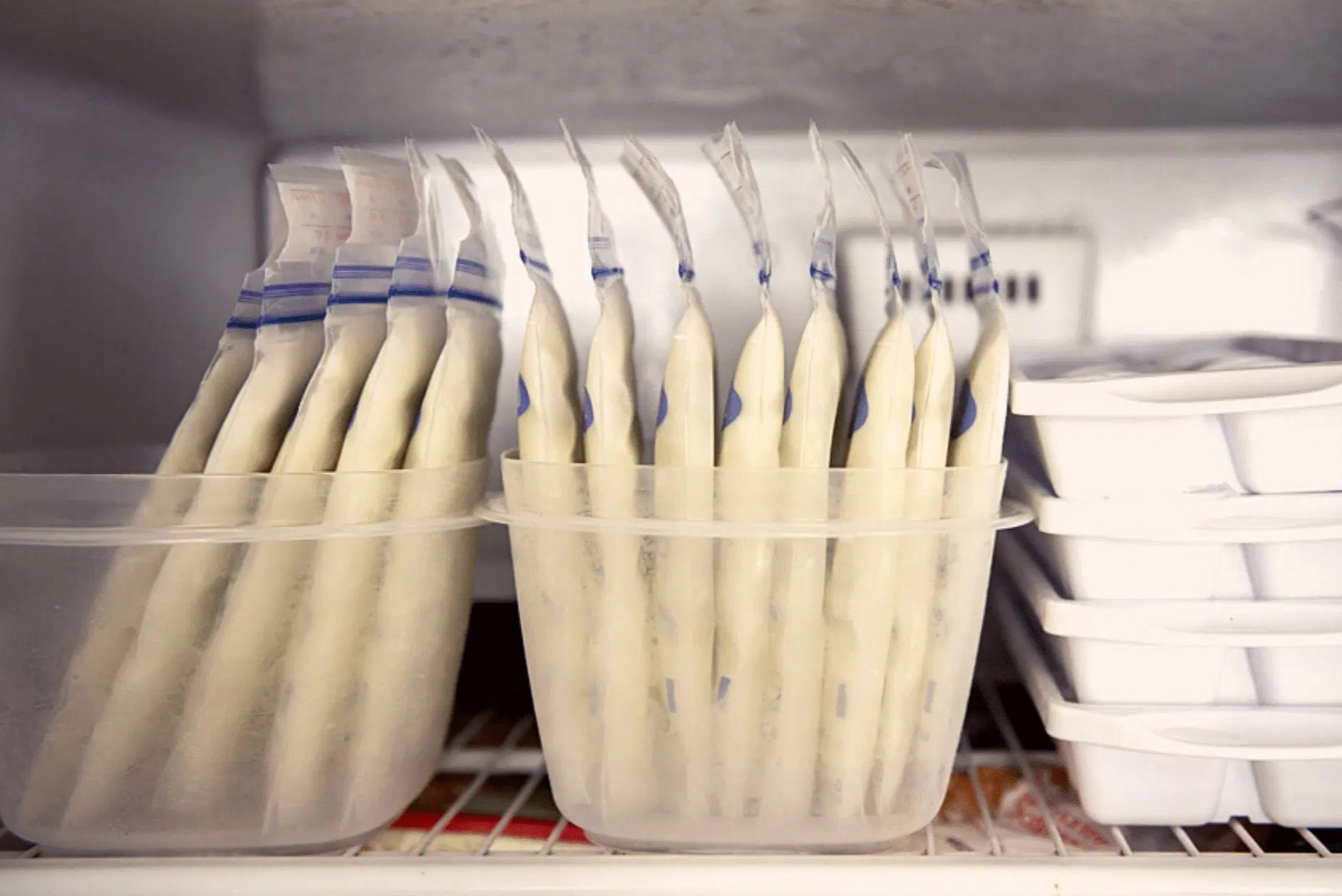
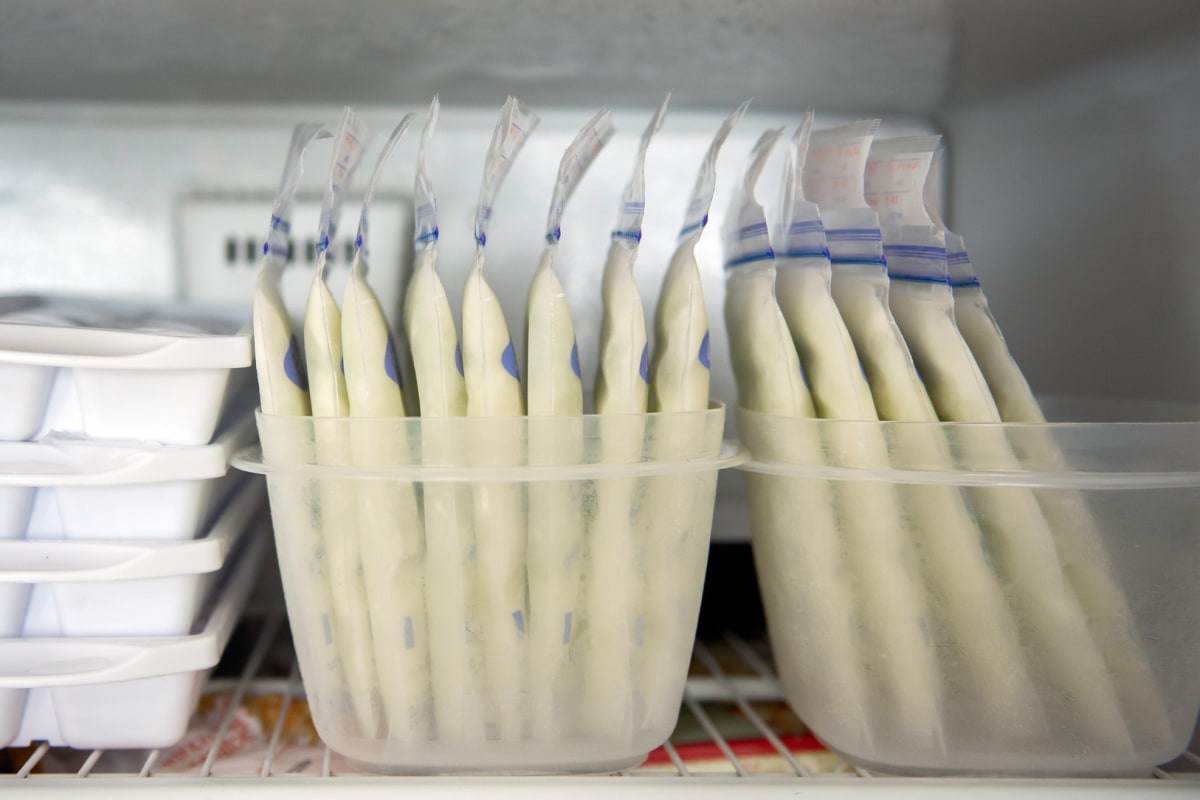
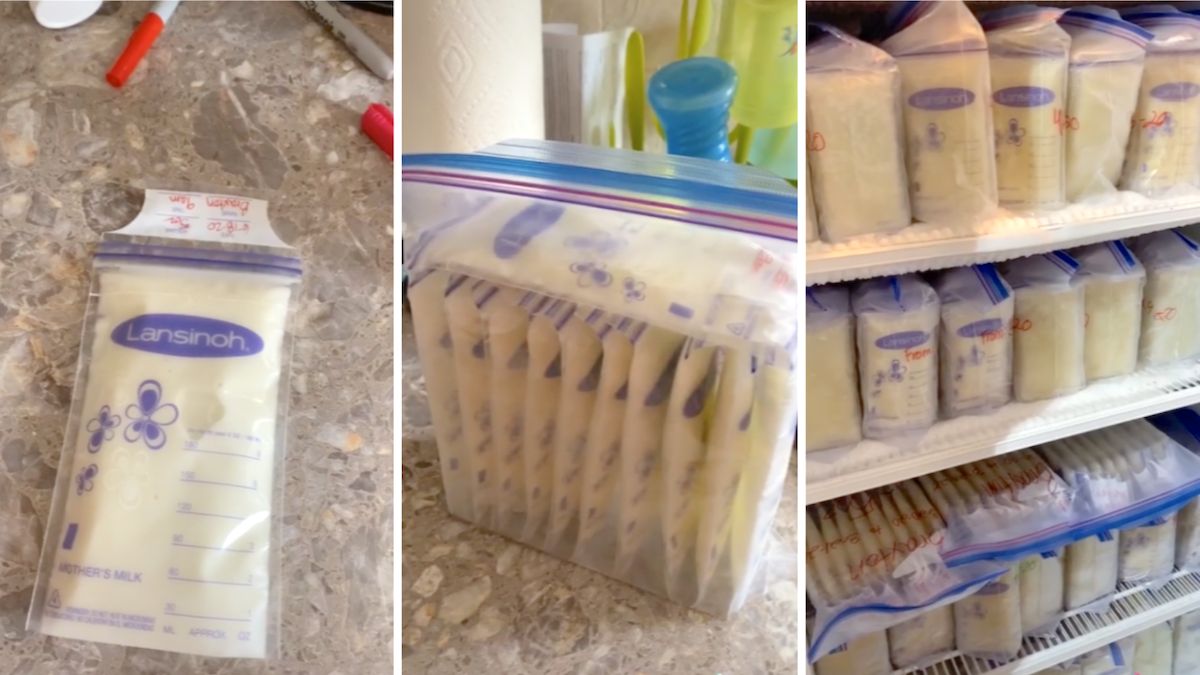
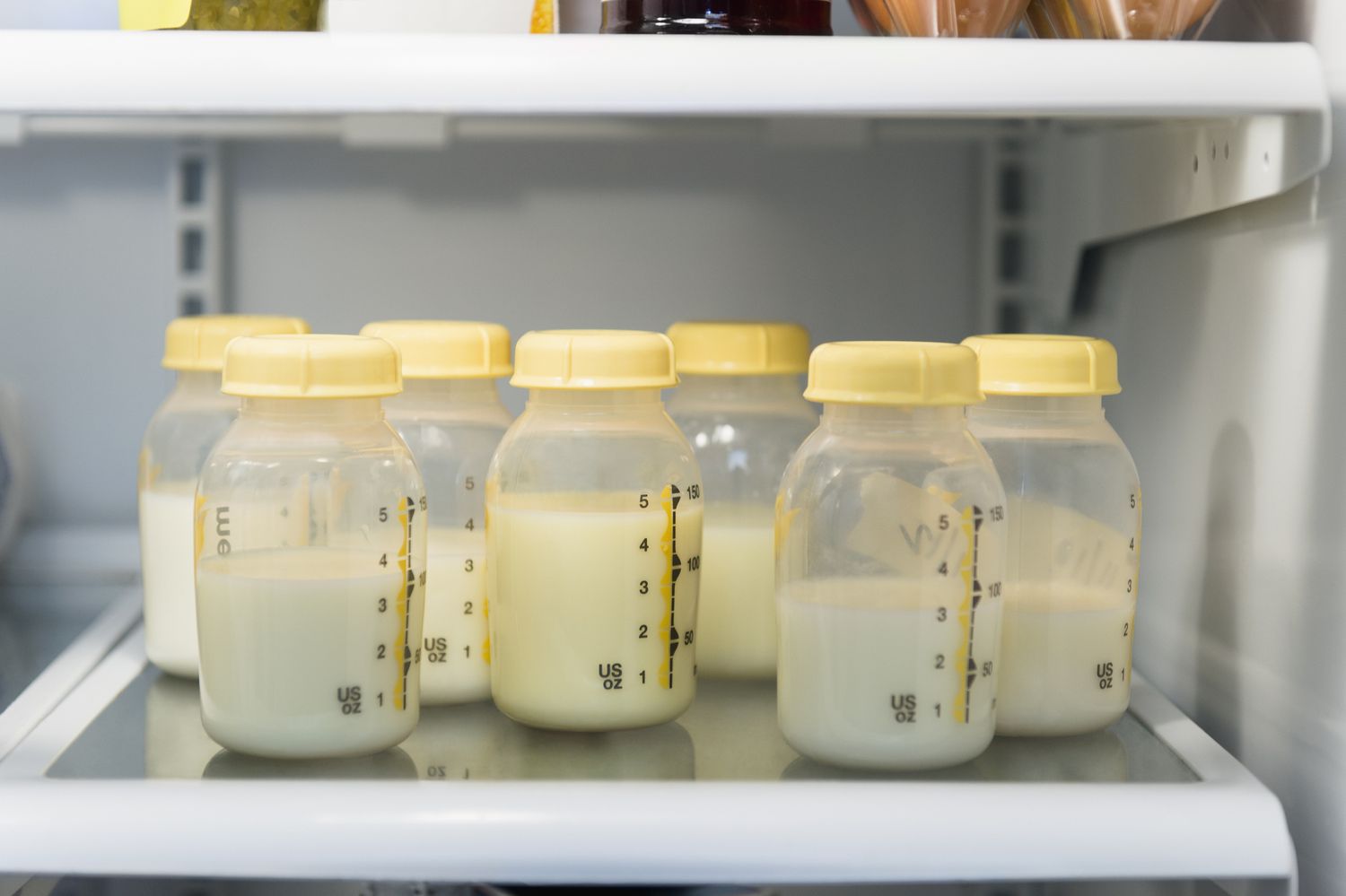
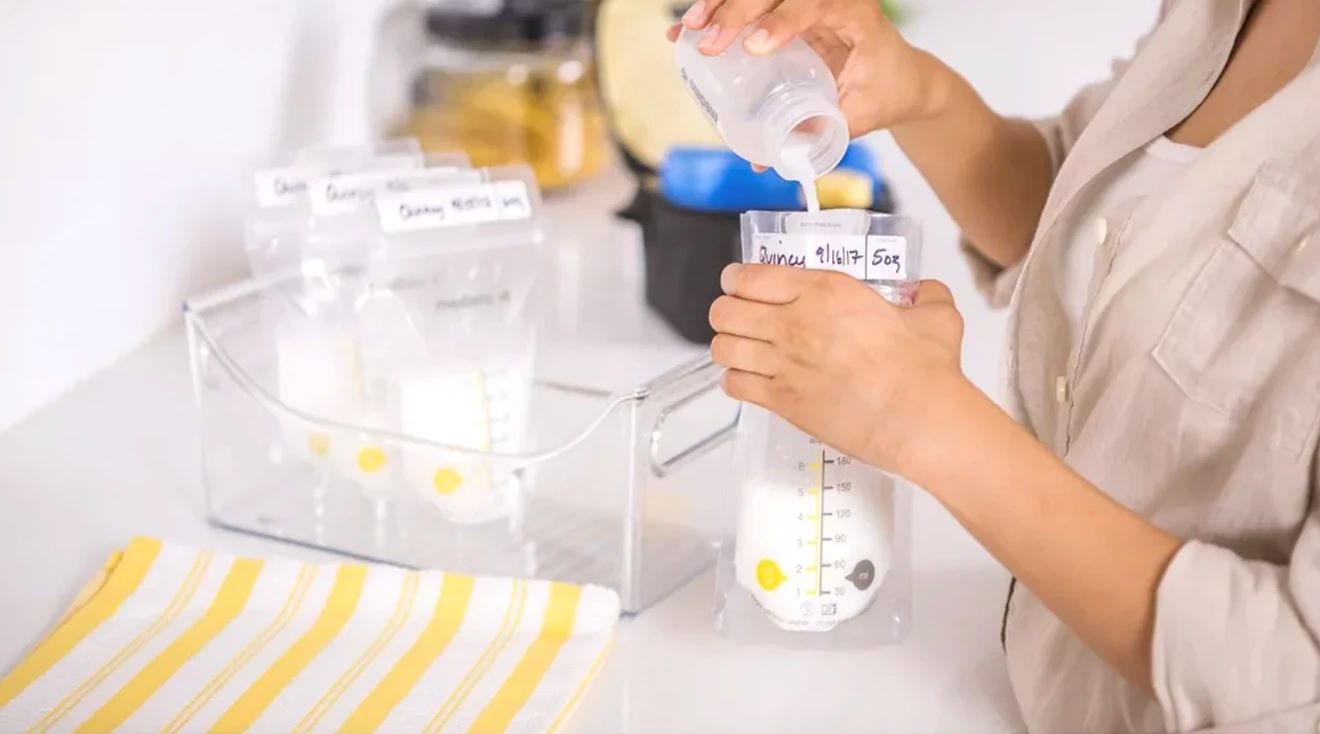
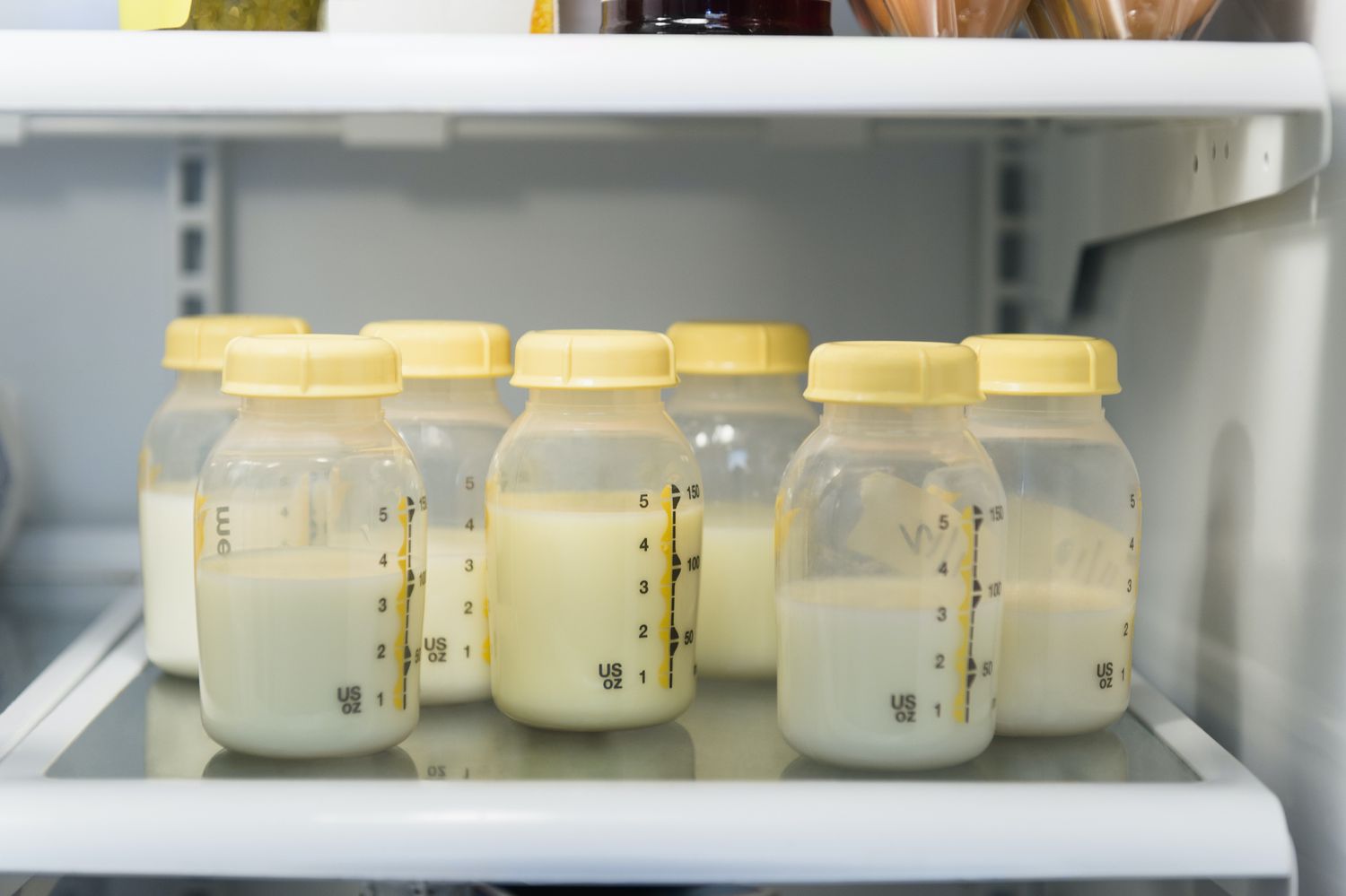
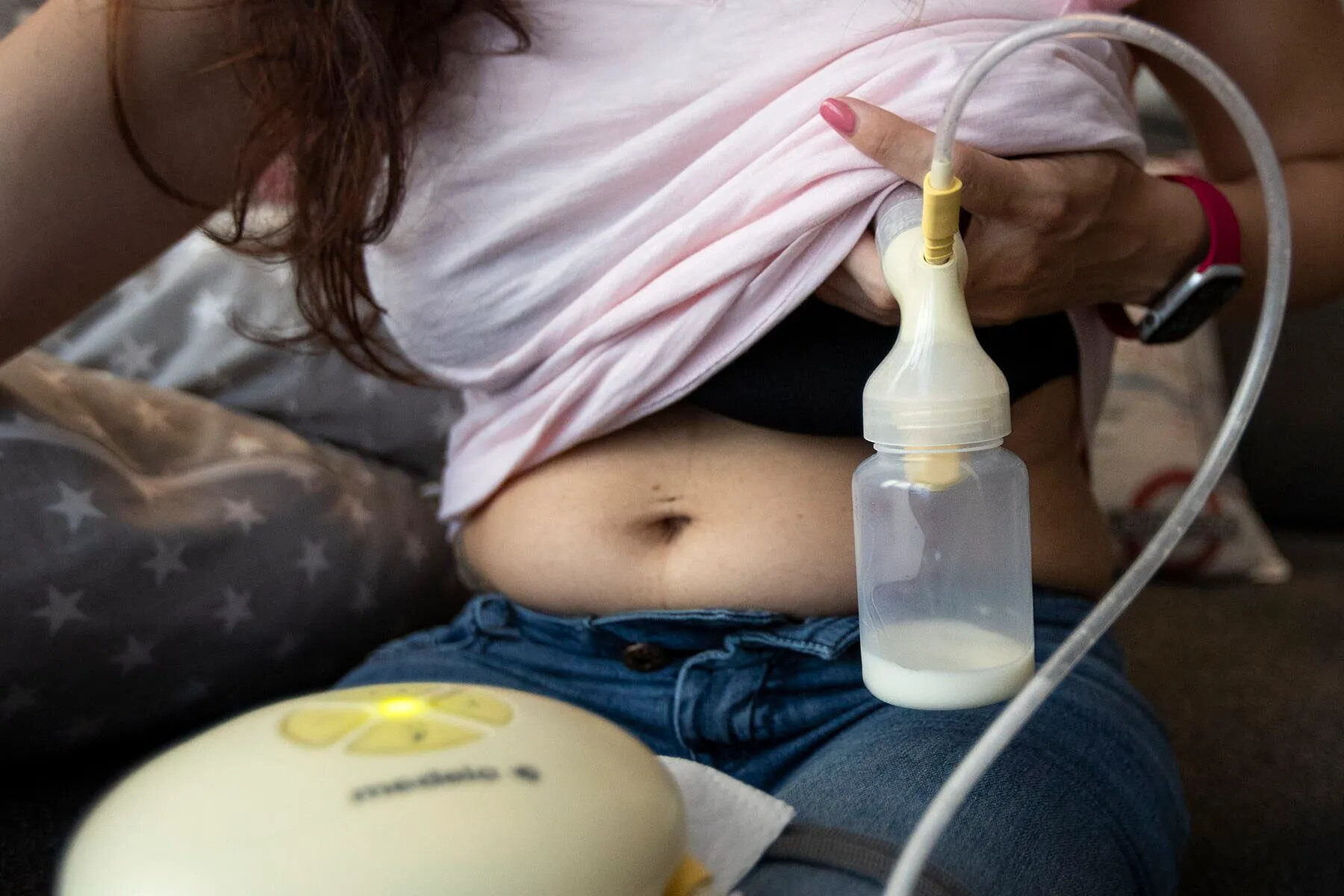
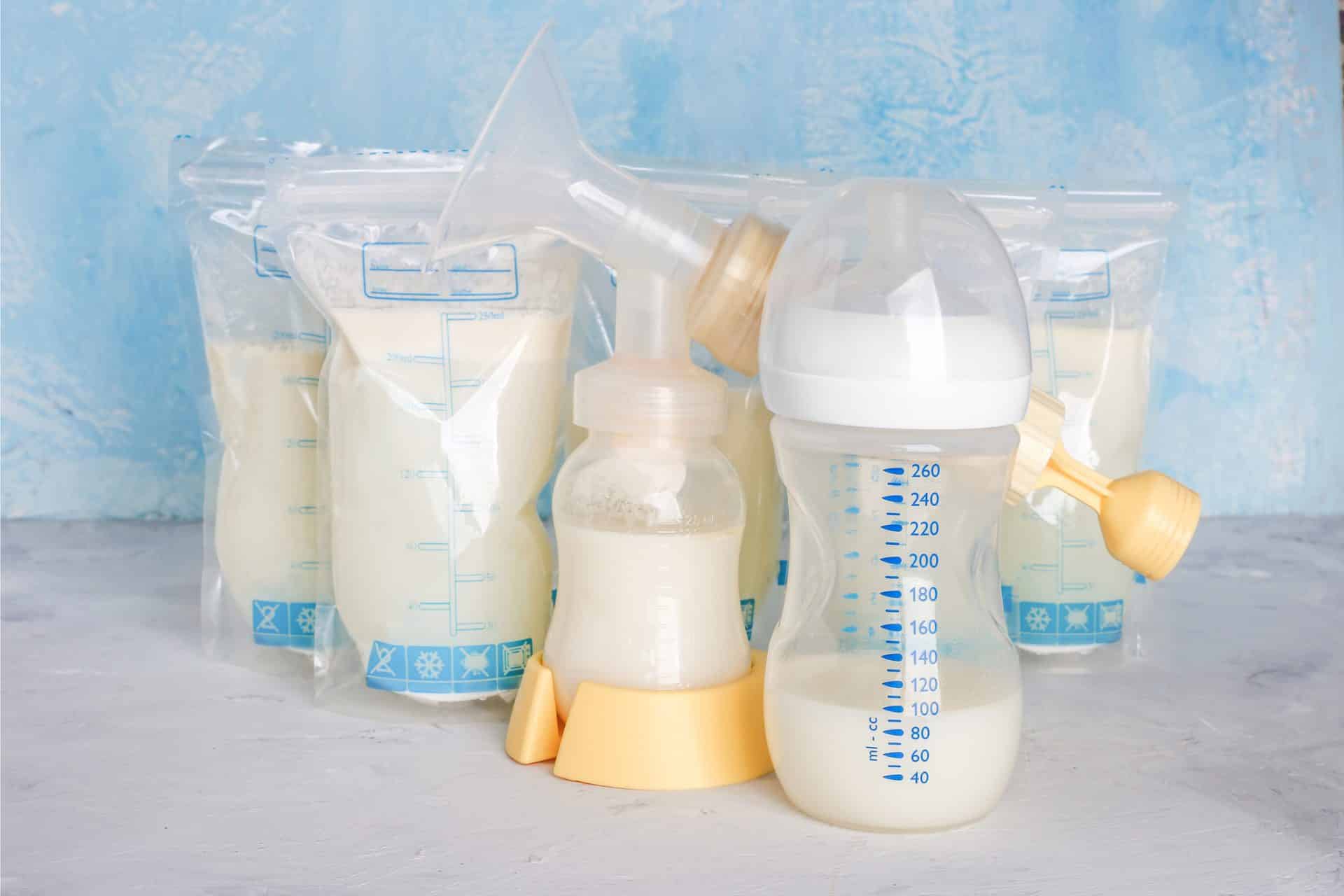
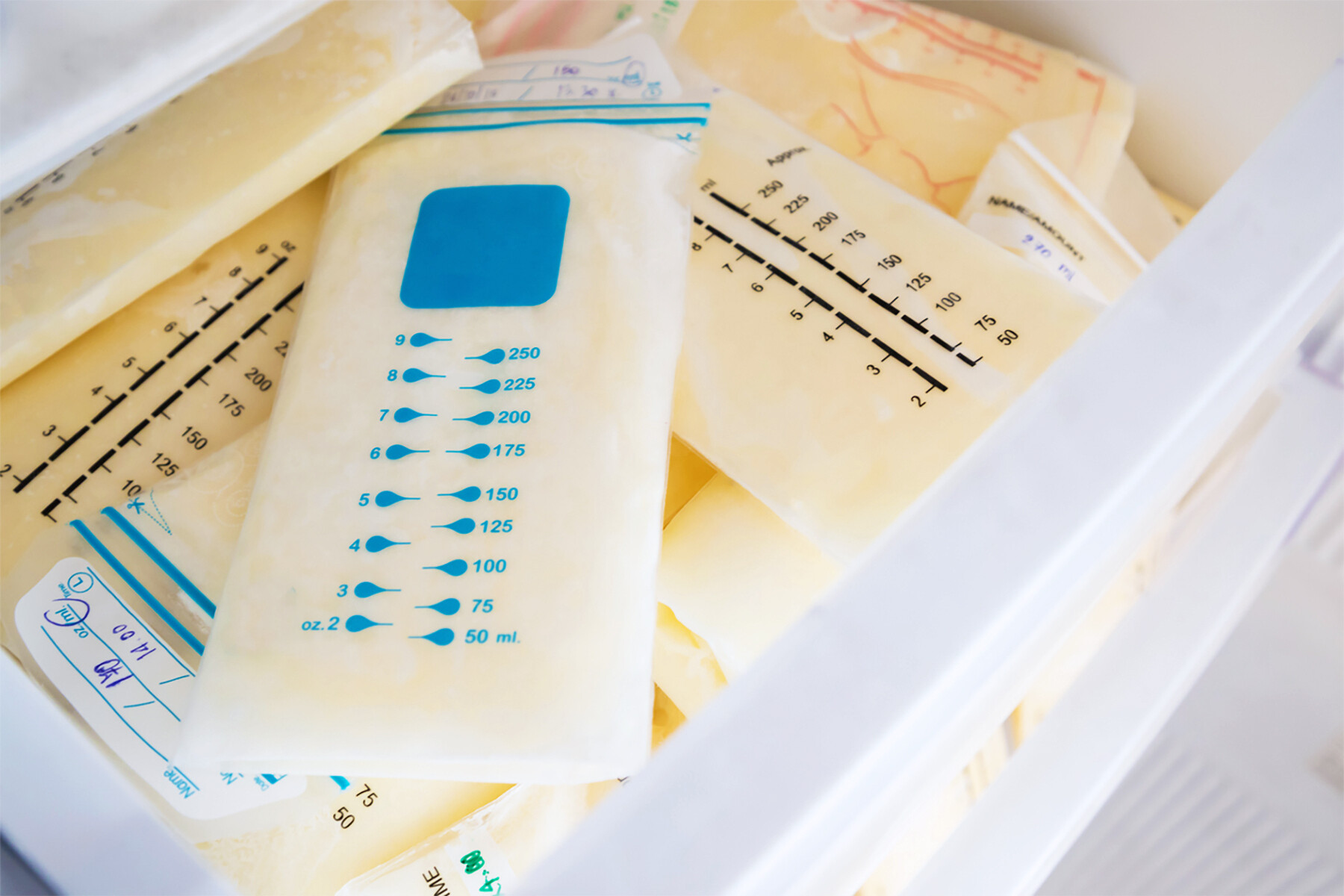
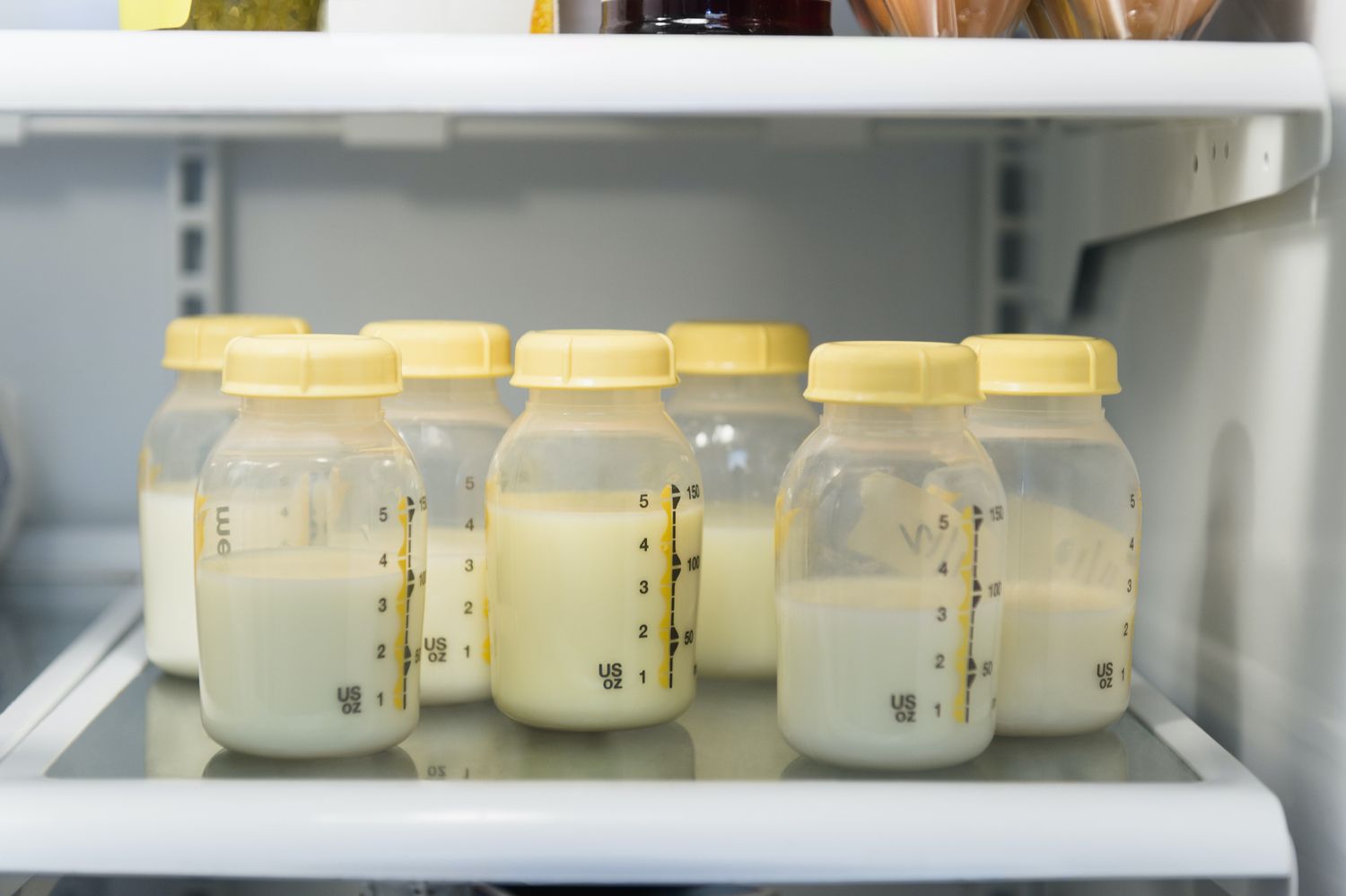
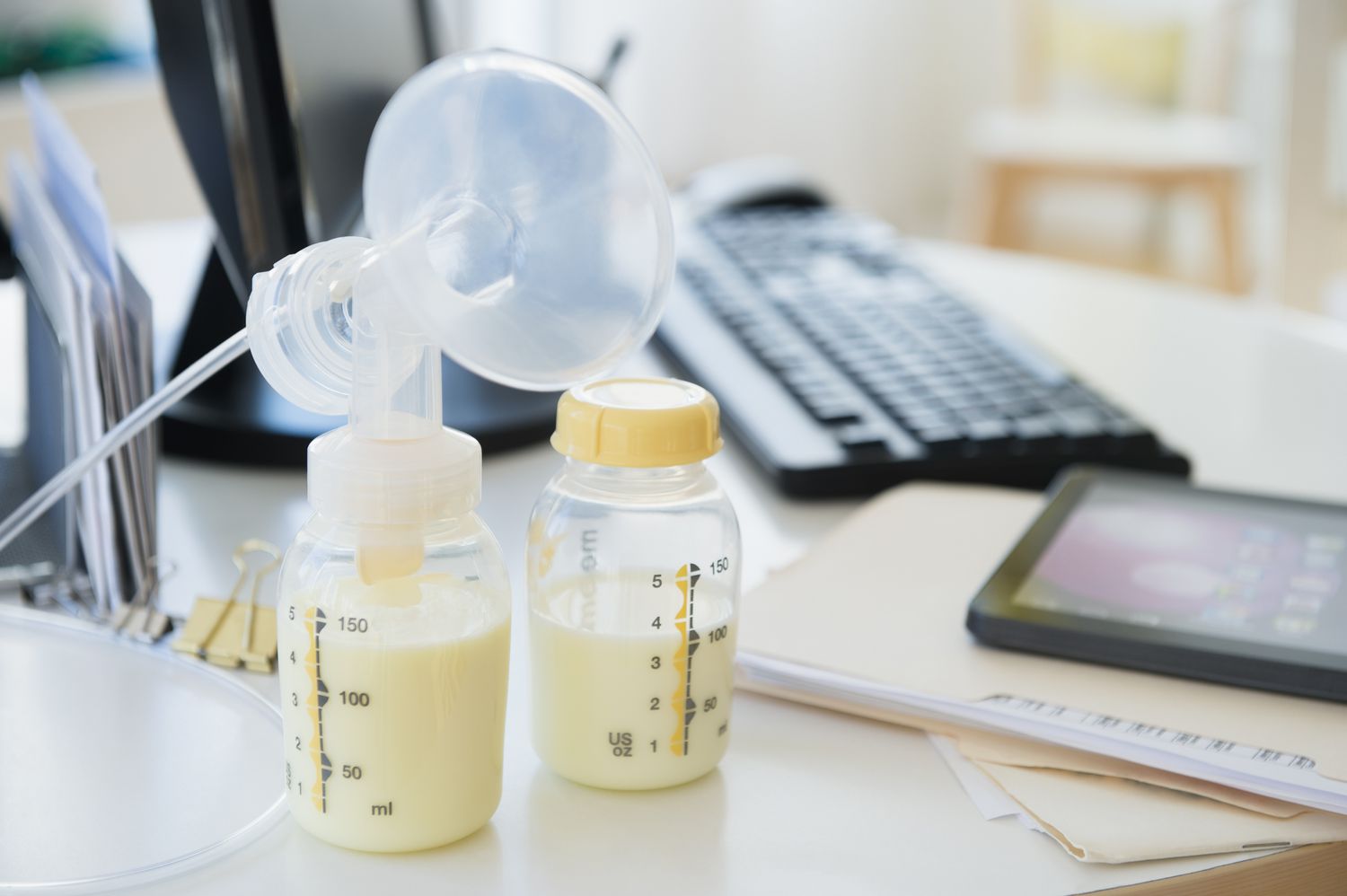
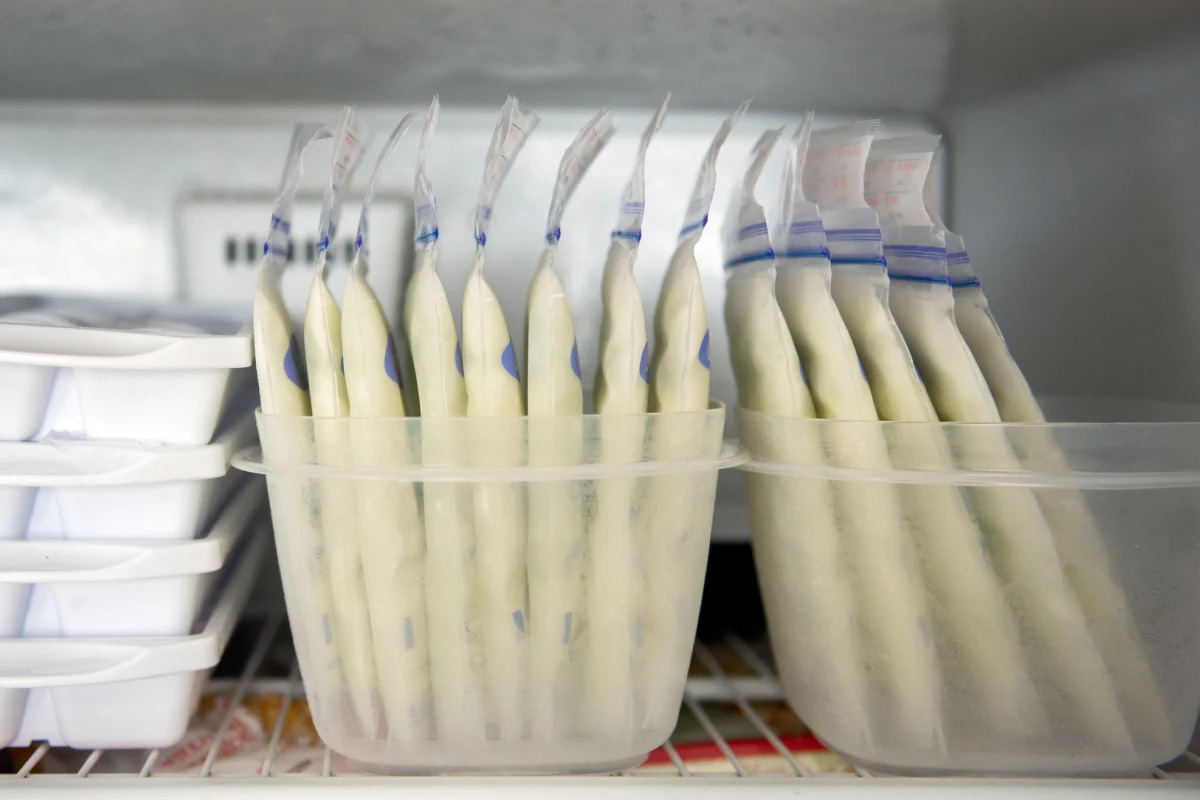
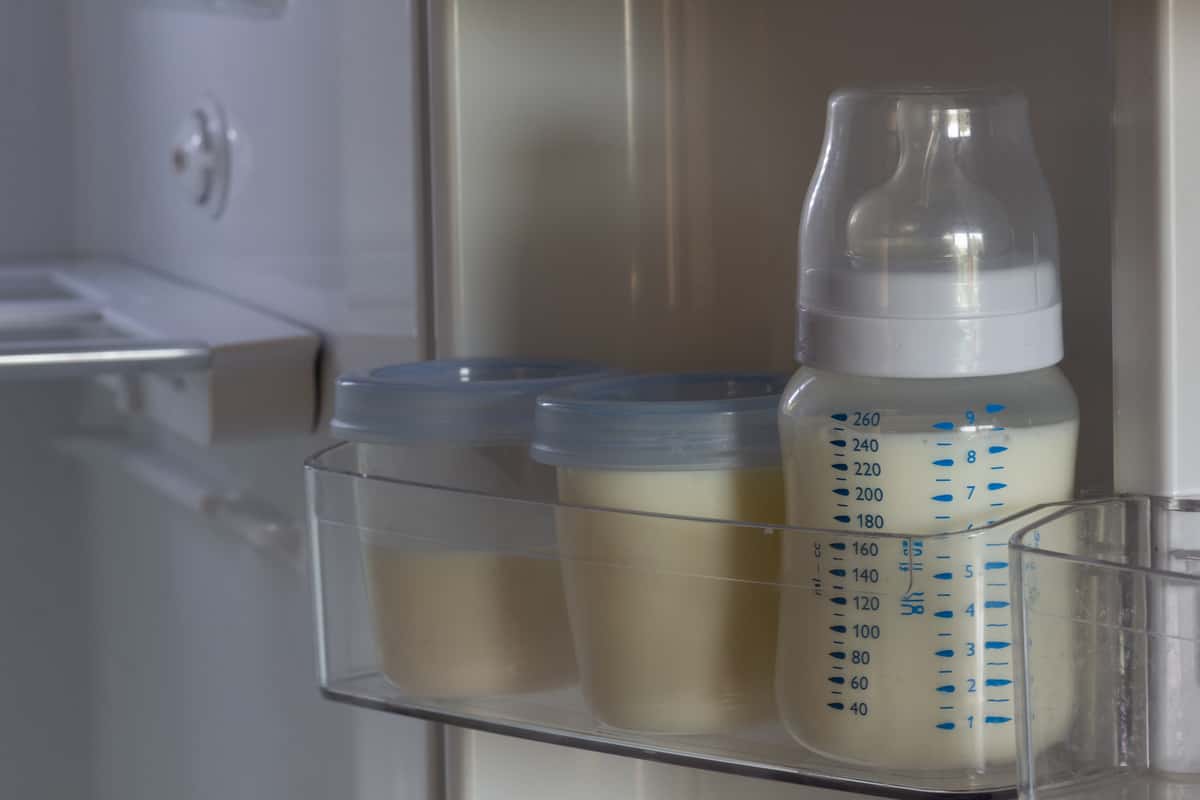

0 thoughts on “How To Store Breast Milk In Deep Freezer”